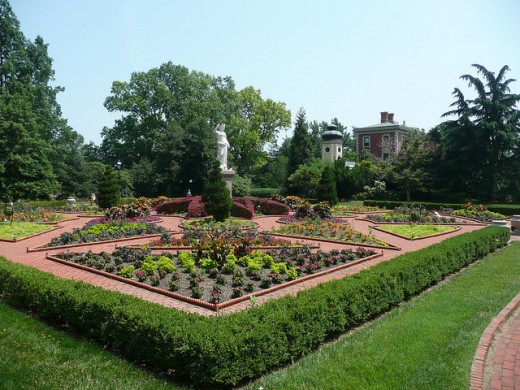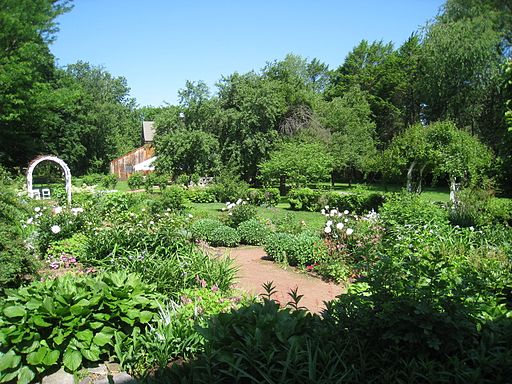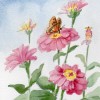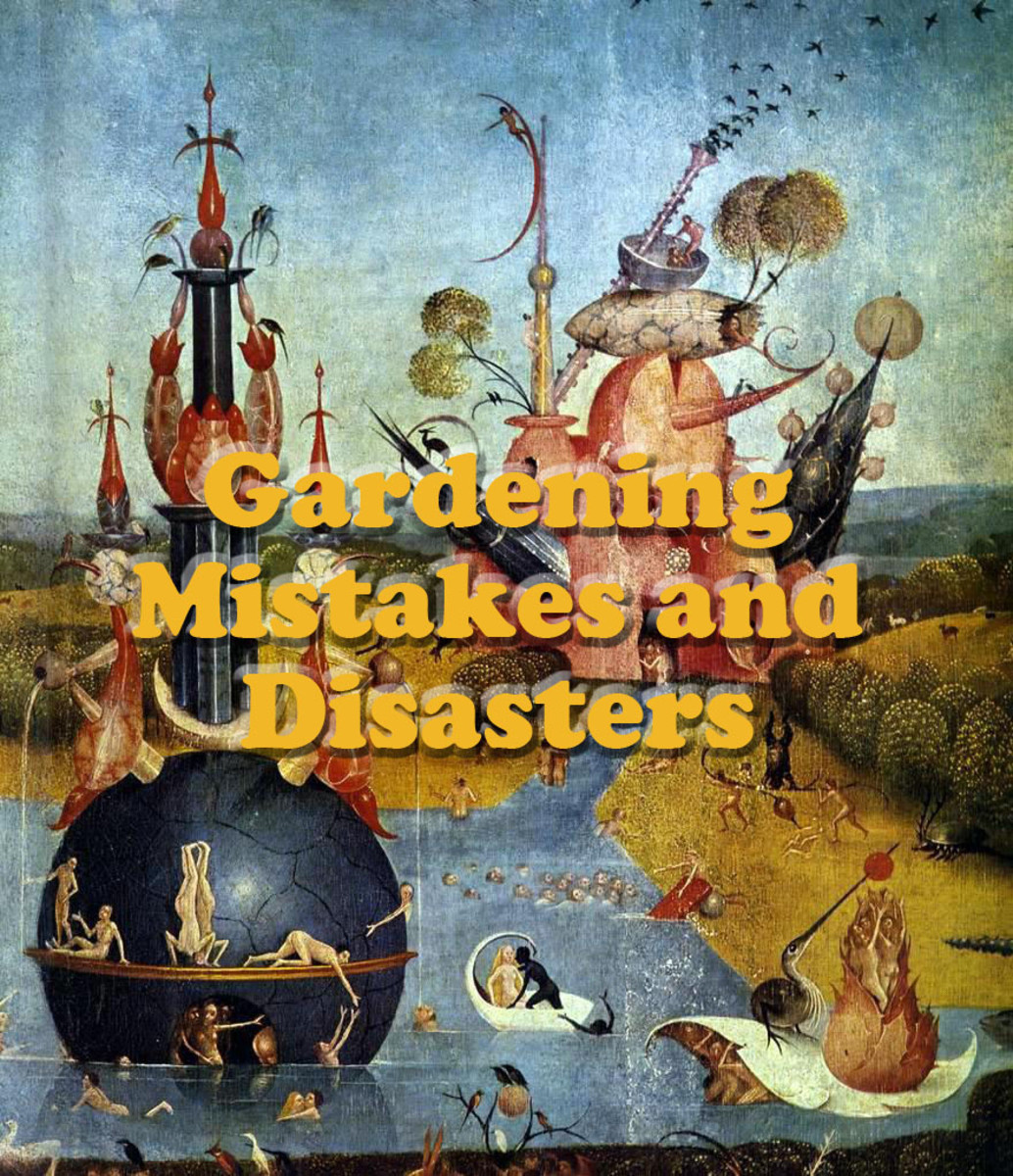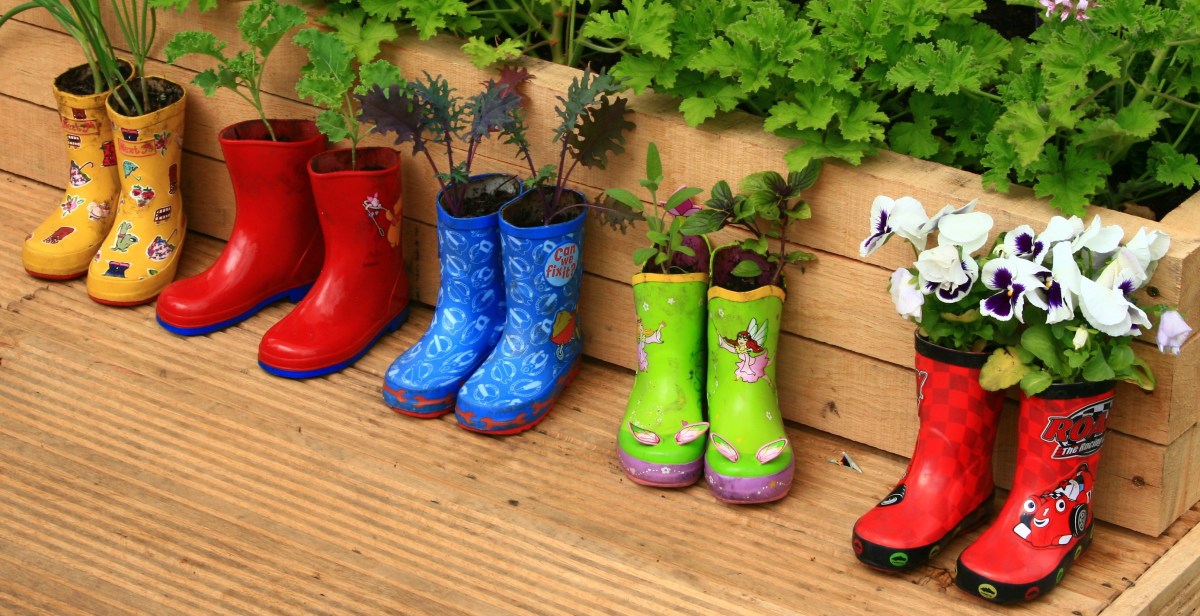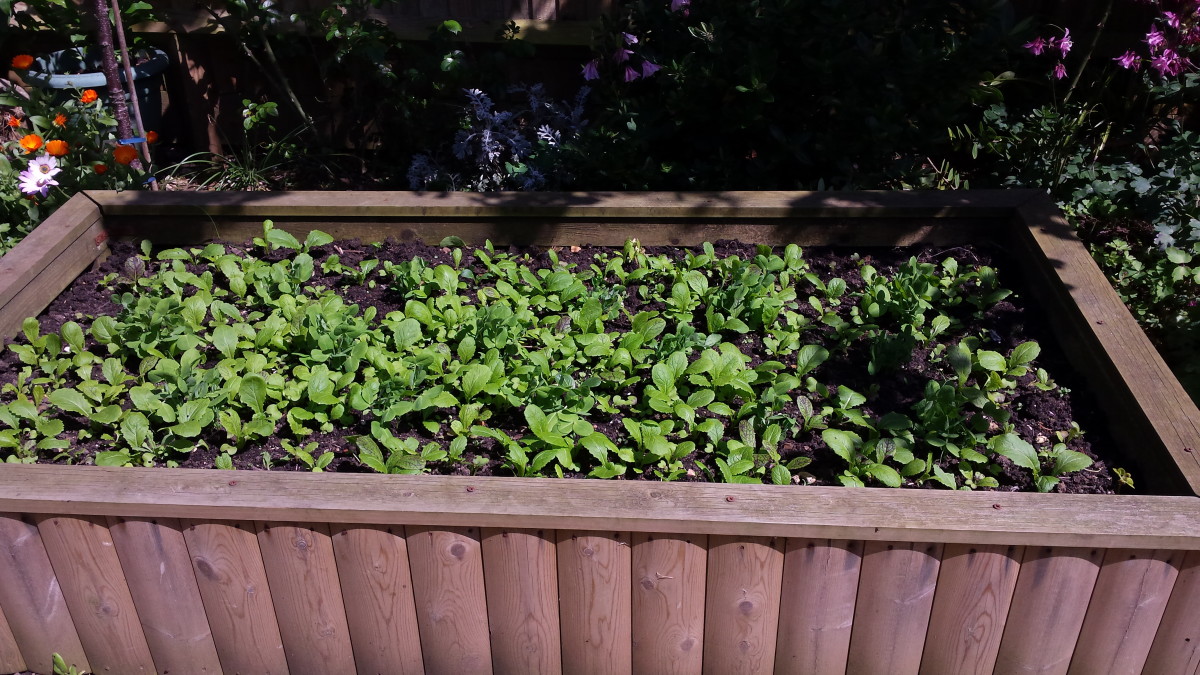Early Northeastern Gardens
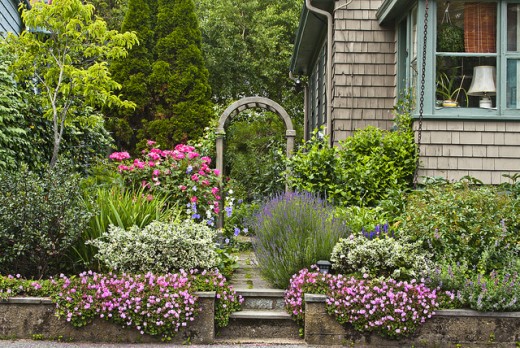
The first garden designs
Early gardens in northeastern America were designed in the most practical way, based on European medieval prototypes. It was most convenient to have the plants near the house. Since there was no way to irrigate extensive areas, they needed to be close to the well. They were planted in formal raised beds, often square, edged with stones, bricks, or boards. Because these beds were elevated, they warmed earlier after the winter, and drained well. Walkways led out and around these areas, often gravel, crushed shells, or brick. Sometimes these beds were edged with pinks, or clipped boxwoods where hardy. The outer edge of the garden often featured fruit trees, and fruit bushes in the raised beds. Roses, lilacs, spireas and azaleas were featured ornamentally.
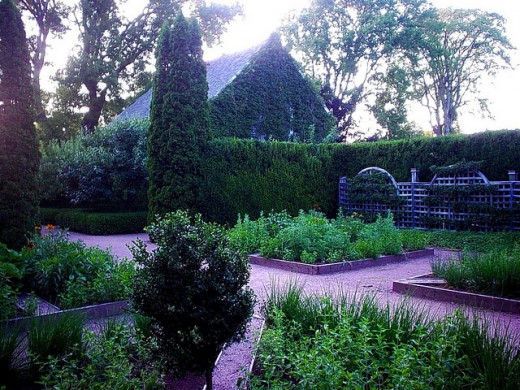
What was planted
Within the planting areas were masses of vegetables and flowers, not generally separated from each other. Here were the herbs that seasoned food and aided in treatment of illness. Many had been known for centuries: rosemary, sage, thyme, fennel and others. Some were important then, but less familiar to us, such as comfrey (Symphytum officinale), known for its wound-healing capacity, and plantain (Plantago major), now merely a lawn weed to most of us, but used to halt bleeding. Dandelions, Taraxacum officinale,(which need no introduction) came over on the Mayflower, used medicinally, as a spring salad, and even for wine-making. Similarly, the weed lamb’s quarters (Chenopodium album), which the colonials used in salads. Common burdock, Arctium sp.,; common mullein, Verbascum thapsus; and yellow oxalis, Oxalis stricta, were all said to have medicinal properties. Subsequently, we pull them out of our gardens as weeds today. A doctor's advice is needed with these herbal medicines. There are many more of these invaders which could be mentioned, which have become as naturalized as we are.
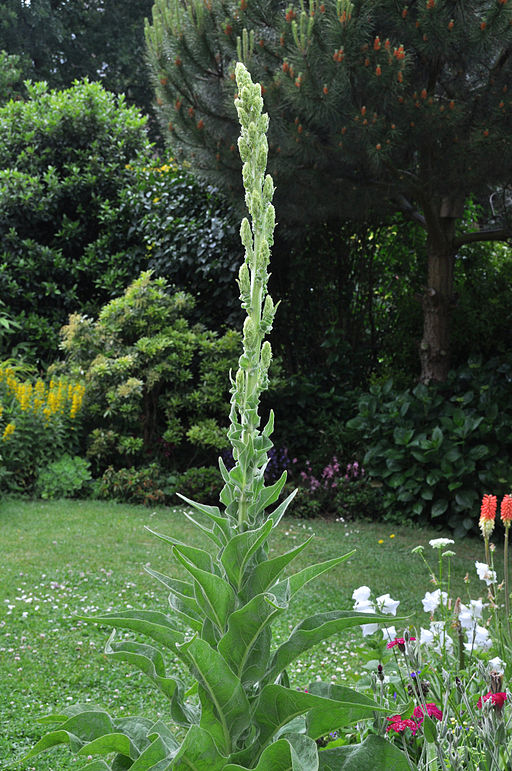
Naturalized plants
Throughout the margins of our highways, where the long grass grows for a time and few people take real notice, there are plants that echo the history of our country. We are very used to seeing wild white daisies (Leucanthemum vulgare), bouncing bet (Saponaria officinalis ), spotted knapweed (Centaurea maculosa) and other plants that travelled here with the early settlers, perhaps by accident.
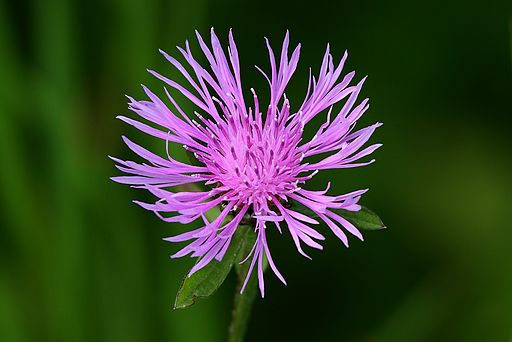
Everyone wants flowers!
Other charming flowering plants that could be tucked into the new gardens also showed up: “gillyflowers,” (probably pinks, but sometimes wallflowers ), marigolds, chamomile and others which may have had medicinal uses at the time, but were also pretty. Daffodils, roses and others were just plain attractive. The single Deptford pink (Dianthus armeria), for example, grew abundantly in England, but is now found in almost every American state, colonizing poor, dry, barren soils and sending up its hot pink flowers.Too lovely to leave back home, it just as easily could have come as random seeds in hay.
Deptford pink
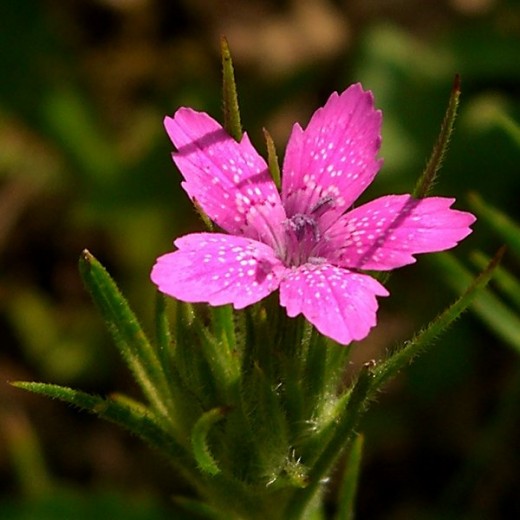
Fancier flowers yet
Many carnations were bred from these early single pinks. The poet Andrew Marvell wrote whimsically that “the pink grew then as double as his mind,” implying that current gardens had corrupted the innocent simplicity of nature. Complexity surely never diminished the popularity of these flowers. Carnations even appear in the medieval Unicorn tapestries: http://blog.metmuseum.org/cloistersgardens/2013/09/06/the-pink-reincarnate/ They symbolized the Virgin in Catholic cultures, and also marital happiness. Their fragrance counteracted the dirt and odor of a less sanitized era.
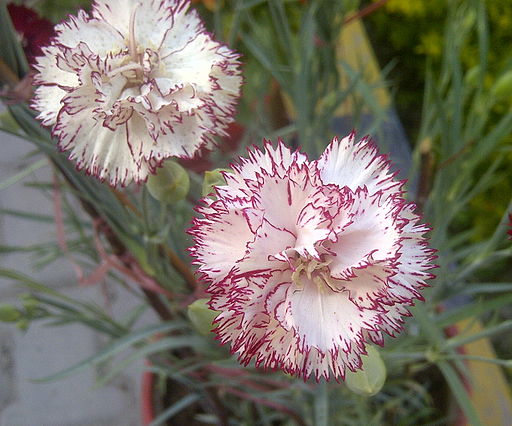
Vegetables, too
Small vegetables grew near the house, such as onions, garlic, carrots, and cabbage. Many newer, larger vegetables growing in nearby fields were native to America, and adopted from native peoples, such as corn, squash, and cucumber. Some familiar to us, such as tomatoes, came into the vegetable garden in the 19th century, since earlier they were thought to be poisonous!
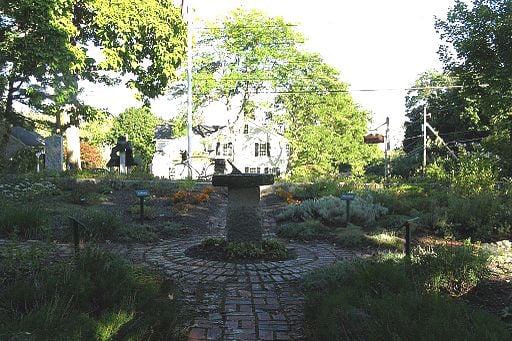
Native plants are introduced
Ironically, some of the finest native plant species, such as magnolias and rhododendrons, gained popularity here after plant collectors had introduced them in England. William Bartram was one of the most famous plant investigators in the 1700s, even finding lovely Franklinia trees with large poppy-like white flowers, similar to a Stewartia. No more specimens of these trees were ever discovered. It is still in cultivation, fortunately.
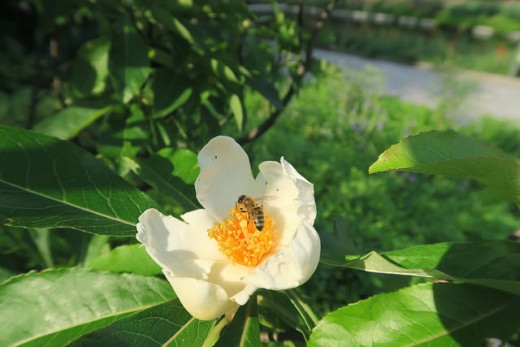
Pleasure Gardens
Wealthier folk had so-called pleasure gardens, exhibiting formal design and restrained floral displays. Often, these large, spacious expanses were also bordered with boxwoods or some clipped hedges. Topiaries were a whimsical touch. Such a garden was more common in the Southern states among wealthy planters.
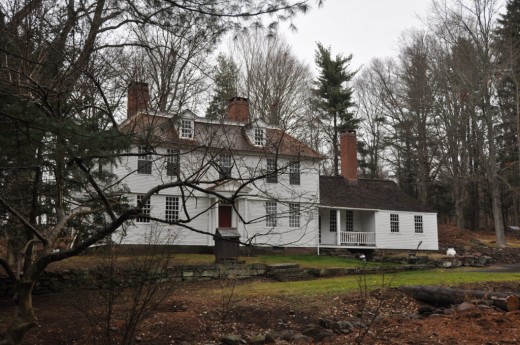
The dooryard garden
The traces of some later gardens can be seen in front of many older New England houses: these are the “dooryards,” little raised terraces in the front of the house. One of the earliest found was in Massachusetts in the 1640s at the the John Whipple house, although dooryards became more common in the 19th century. Short stone walls are often all that is left, although they would have had fences on top of these to keep animals out. Usually these fences were picket, sometimes ornamental iron, with stone steps to the front door and sometimes a stone mounting block to help people onto their horses. The front gate completed the look. The garden itself was a riot of colorful flower varieties packed into this small space, easily accessible and easily maintained. Flowers lined the path up to the front door, with small shrubs and vines on trellises as well. Walt Whitman’s poem about Abraham Lincoln, “When Lilacs last in the Dooryard Bloomed” probably refers to a similar growing area near the front door. Many paintings and photos also document this practice.
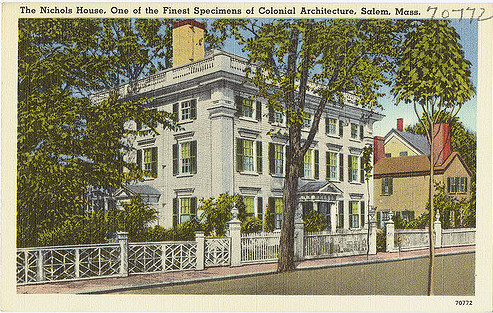
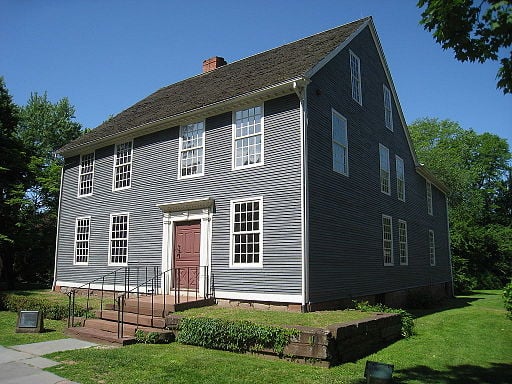
Victorian designs
Victorians would more fully discover the pleasures of house plants, home greenhouses or conservatories, and more naturalistic or “gardenesque” design. Curved lines, trees and shrubs growing more naturally, ponds, streams and waterfalls, iron urns spilling over with flowers, and beds packed with annuals would become popular. The well-known landscapist Andrew Jackson Downing promoted beautifully manicured lawns. His romanticism also extended to his garden designs, with curves abounding, specimen trees, and dark evergreens to recreate the “thickets” of a wood. The Hudson River school of artists also began to exalt the glories of the wild American landscape and its design possibilities. Our present park-like front yards are the descendants of these ideas. By the late 19th century, there was a new trend—the front lawn and foundation plantings. These continue to this day.
